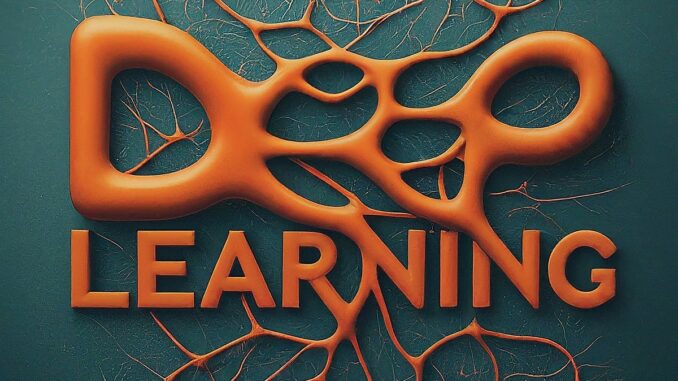
Ah, deep learning. It’s like pizza. You can throw on a bunch of random toppings and hope for the best, or you can carefully curate a masterpiece of flavor and efficiency. Just like that extra scoop of pineapples🫣 might overpower the delicate dance of pepperoni and peppers, tweaking your deep learning model’s hyperparameters can turn a powerful tool into a soggy mess. Fear not, intrepid data scientist! This guide will equip you with the know-how to fine-tune your model like a Michelin-starred pizzaiolo.
Step 1: The Baseline (a.k.a. The Plain Cheese)
Imagine a pizza with just cheese. Simple, but surprisingly tasty. Our first model will be equally straightforward. Start with two hidden layers, each with the same number of neurons as your input features (think pepperoni slices!). Compile it with the Adam optimizer (the friendly neighborhood delivery guy) and choose the appropriate loss function for your task: binary cross-entropy for classification (like deciding between pineapple and anchovies) and mean absolute error (MAE) for regression (how much extra garlic bread do you need?). Train it in batches of 32 (think individual pizzas coming out of the oven) for 100 epochs (minutes in the oven). See how it performs on both training and test data (your taste buds and your friends’). This is your baseline accuracy/MAE, the foundation for our hyper-tuning adventure.
Step 2: More Pepperoni, Please! (Increasing Neurons)
Now, let’s spice things up! In our second model, we’ll increase the number of neurons in the first hidden layer, like adding extra pepperoni. Keep everything else the same — compile, train, evaluate. Compare the accuracy/MAE to the baseline. Did the extra pepperoni make the pizza better, or did it overpower the other flavors? Keep the model with the best performance — it’s like choosing your favorite pizza topping combo.
Step 3: Time for Extra Baking? (Increasing Epochs)
Remember that undercooked pizza? Let’s not repeat that mistake. Take your high-performing model from Step 2 and increase the number of epochs (baking time) to 200. Observe if the accuracy/MAE improves or starts to decline. Think of it like finding the sweet spot where the crust is crispy and the cheese is perfectly melted.
Step 4: The Gourmet Deep Dish (Advanced Tuning)
Feeling adventurous? Play with the number of hidden layers and neurons per layer, just like building a gourmet deep dish pizza. But remember, with great power comes great responsibility (and potential overfitting!). Use techniques like regularization and early stopping to avoid your model becoming a flavorless, burnt mess.
Optional Topping: Learning Rate Tuner (for the Extra Savvy)
Learning rate is like the oven temperature — too high, and your pizza burns; too low, and it takes forever. For fine-grained control, use the learning rate callback function. It adjusts the learning rate on the fly, ensuring your model cooks evenly.
Remember: Hyper-tuning is an iterative process. Experiment, analyze, and don’t be afraid to get creative! With the right approach, you can turn your deep learning model into a masterpiece that’s both powerful and delicious. Now, go forth and conquer the world (or at least, your next machine learning competition)!
Code Snippet Example:
from tensorflow.keras.optimizers import Adam
from tensorflow.keras.losses import binary_crossentropy, mae
from tensorflow.keras.callbacks import LearningRateScheduler# ... define your model architecture
# Step 1: Baseline model
model1 = ...
model1.compile(optimizer=Adam(), loss=binary_crossentropy())
model1.fit(..., epochs=100, batch_size=32)
# Step 2: Increase neurons in first hidden layer
model2 = ... # similar architecture to model1, but more neurons
model2.compile(optimizer=Adam(), loss=binary_crossentropy())
model2.fit(..., epochs=100, batch_size=32)
# ... compare and choose the best performing model
# Step 3: Increase epochs for best model
best_model.fit(..., epochs=200, batch_size=32)
# ... evaluate and adapt further
# Optional: Learning rate scheduler
lr_scheduler = LearningRateScheduler(lambda epoch: 1e-4 * 10**(epoch/20))
model.compile(..., callbacks=[lr_scheduler])
model.fit(...)
Hitting a Wall? Don’t Be Afraid to Seek Support!
Even the most seasoned data scientists encounter hurdles on their deep learning journey. If you find yourself struggling to translate a concept into code, remember, you’re not alone! Embrace the power of collaboration and don’t hesitate to seek guidance. A wealth of resources awaits you online, including communities, forums, and yes, even code repositories like my friend’s on GitHub — https://github.com/saishshinde15/TensorFlow.git. Dive into the repository’s treasure trove of TensorFlow snippets and examples. You might just discover the missing puzzle piece that unlocks your coding roadblock.
Remember, the path to mastering deep learning is paved with exploration, experimentation, and sometimes, a helping hand from the brilliant minds within the community. So, keep exploring, keep learning, and never be afraid to ask for support! And if you’d like to connect with me directly, feel free to search for Saish Shinde on LinkedIn. I’m always happy to chat with fellow data enthusiasts and share knowledge!

Be the first to comment